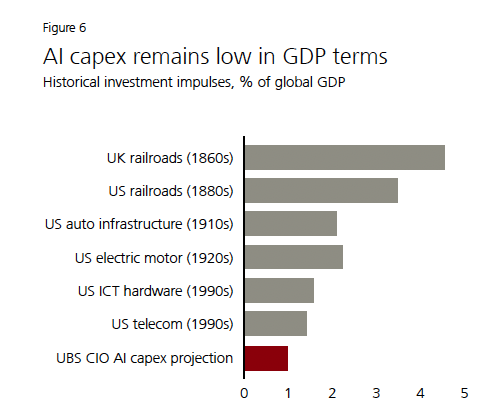Upside Tasuki Gap Candlestick Pattern

Upper Tasuki Gap candlestick pattern: Traders profit by predicting future movements in stock prices through technical analysis. Technical analysis consists of a variety of methods, from candlestick patterns and chart patterns to indicators. Candlestick patterns are derived from the past reaction of price and are used to predict future movements.
In this article we will discuss a candlestick pattern called the upper tasuki gap candlestick pattern.
Upper Tasuki Gap Candlestick Pattern – Definition


The upward tasuki gap candle is a three candle pattern that indicates a continuation of a bullish trend. The formation of this pattern in an uptrend means that the trend will continue to move in the same direction.


This pattern can appear in any trend or anywhere, but it is preferable to appear in an uptrend because the price is more likely to rise.
Note: If you want to learn candlestick and chart trading from scratch, here are some of the best books available on Amazon! Get the book now!


formation
The upper tasuki gap candlestick consists of three candles and should look like this:
- A large green candle that is part of an existing uptrend.
- This is another green candle with a gap above the first candle.
- The third candle is a red candle that closes the gap created by the previous two green candles.
Upside Tasuki Gap Candlestick Pattern – Meaning
When an Upside Tasuki Gap candlestick pattern is forming in an uptrend, the formation of the first candle indicates that buyers are controlling the price and pushing the price higher. The second candle with a gap up indicates that the buying pressure has increased further and a gap up has occurred.
A third bearish closing in between the gap indicates that selling pressure could not push the price any further lower and the gap acted as a support zone. Therefore, this pattern generally indicates that buying pressure remains in place. The formation of this pattern in an uptrend means that market sentiment persists even after the upward movement has paused for a while.
This shows that the market’s buying intent remains unchanged and thus positive sentiment may persist, pushing prices higher. Therefore, anyone who holds stocks with this pattern formed can hold on to those stocks for a longer period of time. This also creates opportunities for new long positions.
Upside Tasuki Gap Candlestick Pattern – Trading Ideas


Traders must confirm the previous trend before the Upside Tasuki Gap is formed. candlestick pattern It’s on the rise. If this pattern forms in an uptrend, here are some guidelines for trading:
- entry: If the price of the security begins to trade above the opening price of the third candle of the Upside Tasuki Gap Candlestick pattern, a trader can take a long position.
- Target: Traders can exit their positions when the security’s price reaches an immediate resistance area. Once this level is reached, you can also take a partial profit on the trade and hold the remaining position until the next resistance level.
- Stop Loss: Traders can set a stop loss near the closing price of the first candle.
Also read…
Upper Tasuki Gap Candlestick Pattern – Example


In the SURYA ROSHNI 1-day chart above, you can see that a bullish tasuki gap candlestick pattern is formed when the price is in an upward trend. As discussed, prices have continued to strengthen since this pattern was formed.
At the time this pattern was formed, traders could take long positions when the stock was trading above Rs. 105.25 and the stop loss was Rs. 97.25
Upside Tasuki Gap Candlestick Pattern – Key Features
- The first candle is a strong rising candle, indicating a significant upward movement.
- The second candle is also a bullish candle with a higher market price than the first candle, forming a gap.
- The third candle is a bearish candle that closes the gap formed. This suggests that the bullish momentum may continue as the price did not close below the gap.
- Ideally, volume should increase throughout the pattern, especially during the first candle, to confirm the strength of the trend.
This pattern means that after a brief pause, bullish momentum is likely to resume and push the price higher. However, traders often check other indicators before making trading decisions.
Upper Tasuki Gap Candlestick Pattern – Limit
Although it generally indicates a bullish continuation, the Upside Tasuki Gap pattern has limitations. In erratic markets, reliability is reduced and additional verification with other data is required. Before making any trading decisions based solely on this pattern, you should carefully study and analyze the possibility of false signals, which are not uncommon.
To reduce the chances of making mistakes while reading pattern signals, traders must proceed with caution and judgment.
Read more: Basic analysis of IRB infrastructure
conclusion
A powerful tool in a trader’s toolbox, the bullish tasuki gap candlestick pattern provides a clear signal that the uptrend is continuing in strength. By understanding the creation, psychology, and trading tactics of the patterns, traders can successfully use these patterns in their trading methods.
However, as with technical indicators, it is important to consider other factors such as market conditions, trend strength, and risk management before making trading decisions. What is your opinion about this article? Let us know in the comments section below.
Written by Praneeth Kadagi
By leveraging the Stock Screener, Stock Heatmap, Portfolio Backtesting and Stock Comparison tools on the Trade Brains portal, investors have access to comprehensive tools to identify the best stocks, stay updated and informed with stock market news. invest.


Start your stock market journey now!
Want to learn stock market trading and investing? Check out exclusive stock market courses from FinGrad, a learning initiative from Trade Brains. You can sign up for free courses and webinars from FinGrad and start your trading career today. Sign up now!!



